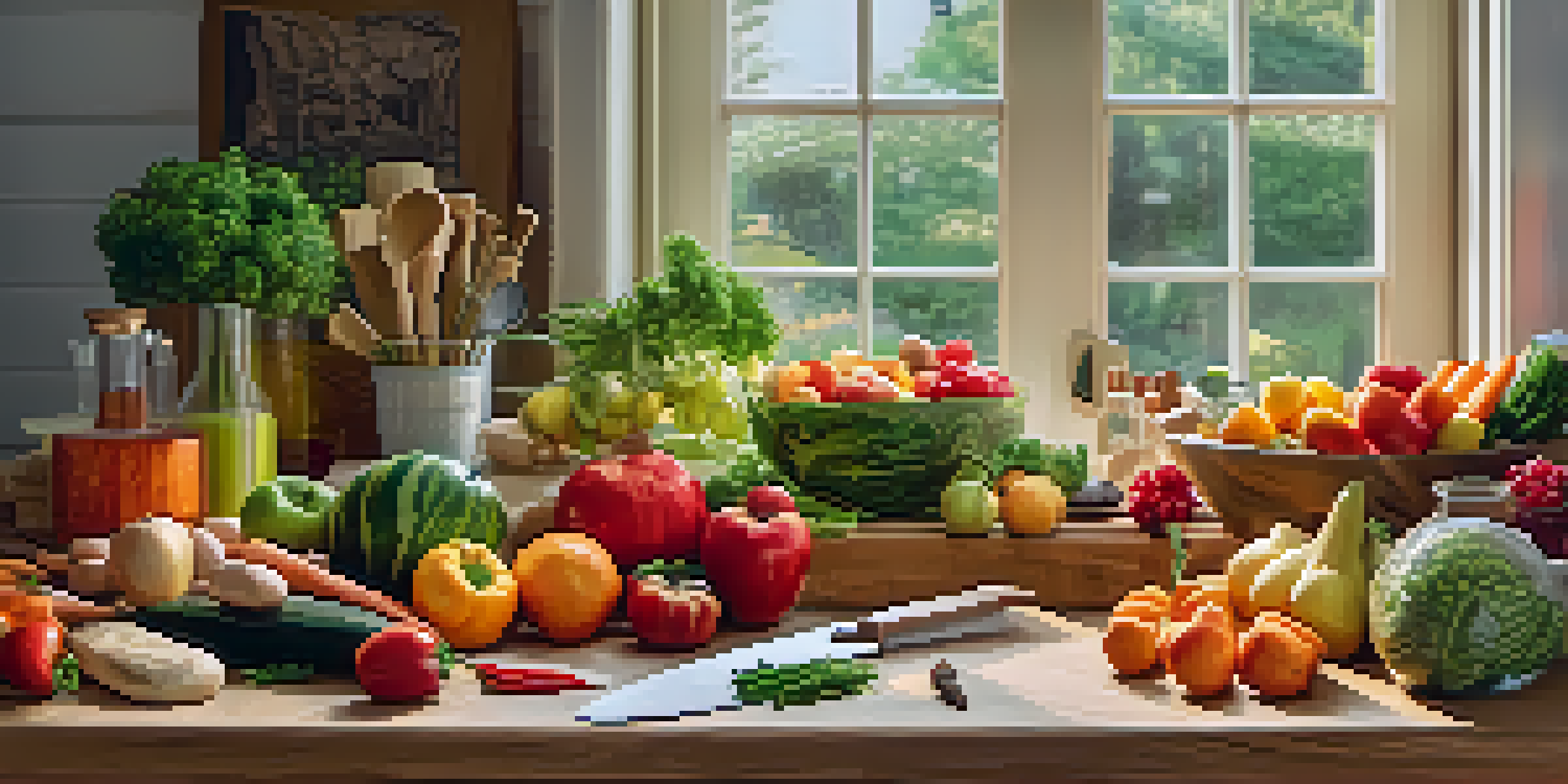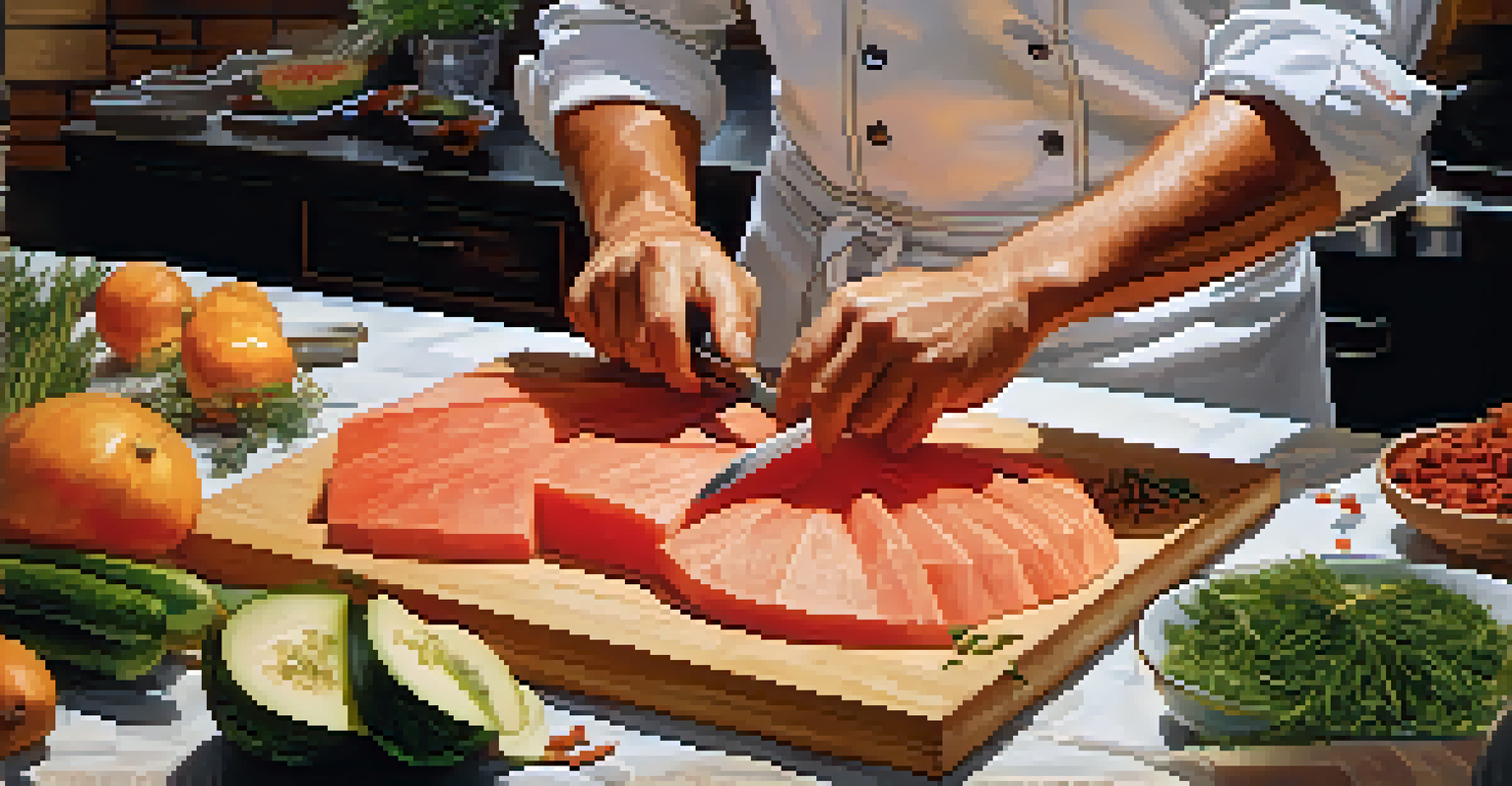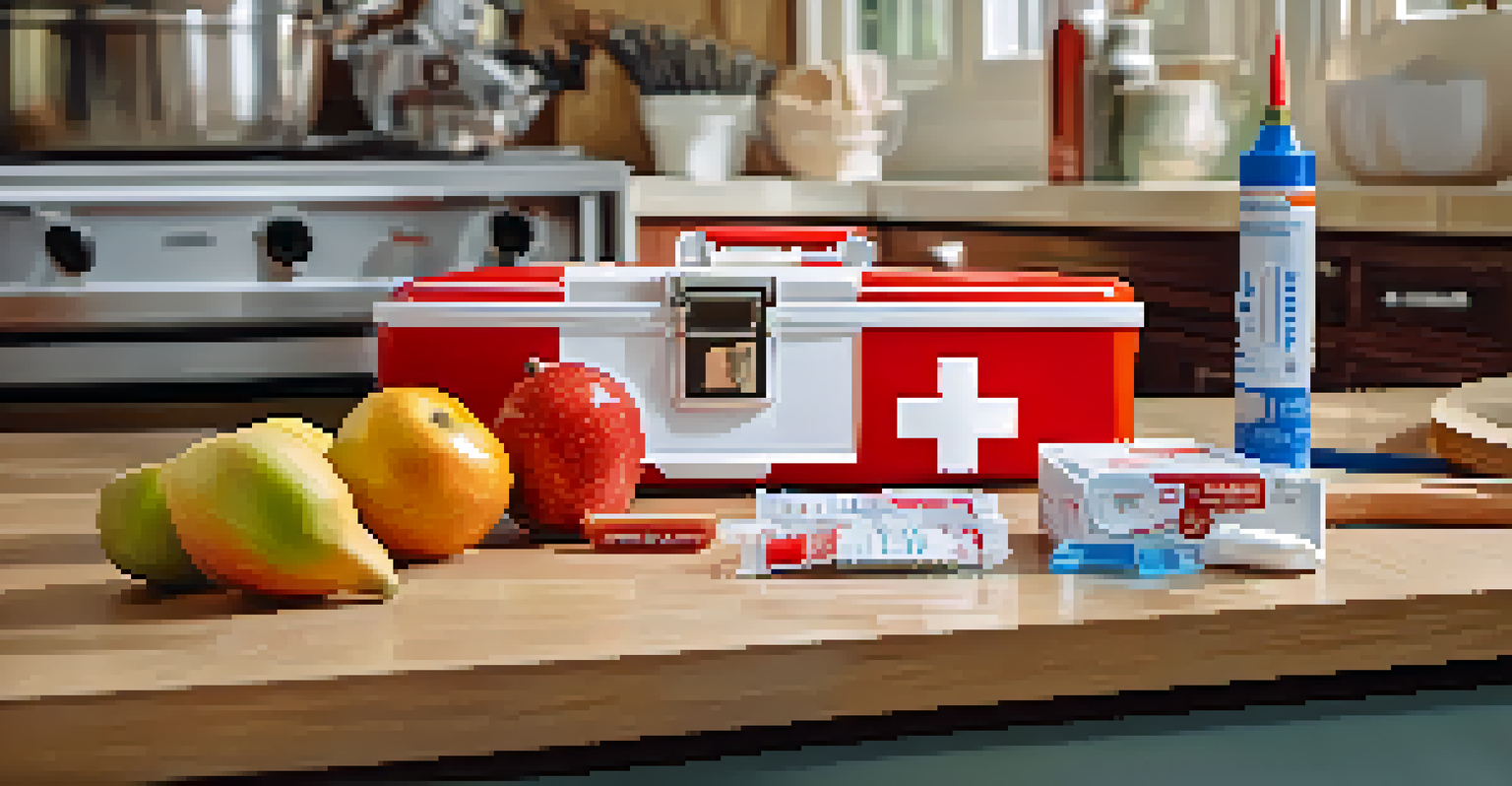Food Carving Basics: Safety Tips for Beginners and Experts

Understanding the Importance of Safety in Food Carving
Food carving can be a fun and creative way to enhance your culinary presentations. However, it’s crucial to prioritize safety, as the tools involved can be sharp and missteps may lead to injuries. Both beginners and experienced carvers need to be aware of the risks to ensure an enjoyable experience without accidents.
Safety isn't just a slogan, it's a way of life.
By understanding the importance of safety, you set the stage for a positive carving experience. When you take the right precautions, you can focus on your creativity and skill development instead of worrying about potential hazards. Remember, a safe environment fosters better results and more enjoyment in your food artistry.
Ultimately, making safety a priority not only protects you but also enhances the overall experience for everyone involved. Whether you’re hosting a party or simply preparing a meal for your family, having confidence in your safety measures allows you to showcase your skills without hesitation.
Choosing the Right Tools for Safe Food Carving
Selecting the right tools is essential for safe and effective food carving. Invest in high-quality knives specifically designed for carving, as they provide better control and reduce the risk of slips. Always ensure your tools are sharp; dull knives can be more dangerous as they require more force to cut.

In addition to knives, consider using carving tools like scoops or specialty garnish tools, which can help you achieve intricate designs safely. Each tool has its purpose, and knowing how to use them correctly can make a significant difference in your carving experience. Don't forget to keep your workspace organized to minimize distractions and hazards.
Prioritize Safety in Food Carving
Understanding and implementing safety measures is essential to enjoy food carving without accidents.
Before you start carving, take a moment to familiarize yourself with each tool's proper usage. This not only boosts your confidence but also ensures that you’re working efficiently and safely, leading to better results and less frustration during your creative process.
Setting Up a Safe Carving Workspace
Creating a safe workspace is vital for any food carving project. Choose a stable surface, such as a cutting board or countertop, that can withstand the pressure of carving. Make sure it’s clean and free from clutter, as a tidy space allows for better focus and reduces the chance of accidents.
The only thing more dangerous than a tool is an unprepared user.
Good lighting is another key element of a safe workspace. Proper lighting helps you see your work clearly, allowing for more precise cuts and reducing the risk of injury. If your kitchen or carving area lacks natural light, consider adding task lighting to ensure you're well-illuminated while you carve.
Lastly, consider using a non-slip mat or securing your carving board to prevent it from sliding around. A stable workspace contributes significantly to your safety and enhances your overall carving experience, making it easier for you to channel your creativity into beautiful designs.
Proper Hand and Body Positioning for Safety
How you position your hands and body while carving can greatly impact your safety. Always keep your non-dominant hand clear of the cutting path to prevent accidental injuries. A good rule of thumb is to use a 'claw grip' with your fingers curled under, keeping them safely away from the blade.
Your body positioning also matters—stand comfortably with your feet shoulder-width apart for better balance and stability. This stance allows you to apply the right amount of pressure while carving without straining your back or arms. Remember, maintaining good posture not only helps prevent injuries but also enhances your carving precision.
Choose the Right Carving Tools
Investing in high-quality, sharp tools and using them correctly enhances safety and improves your carving experience.
Practicing proper hand and body positioning may feel awkward at first, but with time, it becomes second nature. As you build muscle memory, you'll notice that your efficiency and safety will improve, allowing you to focus more on your artistic expression rather than worrying about potential mishaps.
Knowing When to Take Breaks During Carving
Carving can be an absorbing task, but it's important to recognize when you need a break. Prolonged periods of concentration can lead to fatigue, increasing the risk of accidents. Listen to your body; if you start to feel tired or your hand begins to cramp, it's time to step away for a moment.
Taking breaks not only helps prevent physical strain but also allows your mind to reset, which can enhance your creativity. Use this time to hydrate, stretch, or even visualize your next carving design. This can lead to better results and a more enjoyable experience overall.
Remember, food carving is meant to be fun and rewarding. By allowing yourself regular breaks, you can maintain your focus and enthusiasm, ensuring that each carving session is productive and safe.
Storing and Maintaining Your Carving Tools Safely
Proper storage and maintenance of your carving tools are essential for ensuring safety and longevity. Always store knives and sharp tools in a designated area, such as a knife block or a magnetic strip, to prevent accidental cuts when reaching for them. Keeping your tools organized also makes it easier to find what you need without rummaging around.
Regular maintenance is equally important. Keep your knives sharp and clean, as dull blades can lead to slips and injuries. A quick wash and thorough drying after each use will help maintain their condition and ensure they’re ready for your next project.
Maintain Emergency Preparedness
Having a well-stocked first aid kit and knowing how to handle cuts can help you manage accidents calmly while carving.
Additionally, take the time to inspect your tools periodically for any damage. If you notice any signs of wear, such as chips or cracks, it’s best to replace them. This proactive approach not only keeps your tools in top shape but also enhances your overall safety during food carving.
Emergency Preparedness: First Aid for Carving Accidents
Even with the best safety practices, accidents can happen. That’s why it’s crucial to be prepared for emergencies while carving. Start by having a well-stocked first aid kit nearby, complete with band-aids, antiseptic wipes, and gauze. Knowing where your supplies are can save precious time in the event of an injury.
In case of a cut, apply pressure to the wound with a clean cloth to stop the bleeding. If it’s a minor cut, rinse it under running water, apply antiseptic, and cover it with a bandage. However, if the cut is severe or doesn’t stop bleeding, seek professional medical help immediately.

Remember, while safety is a priority, being prepared for accidents can help you handle them calmly and efficiently. By knowing what to do in case of an injury, you can maintain peace of mind and focus on the joy of food carving.